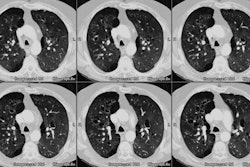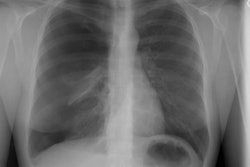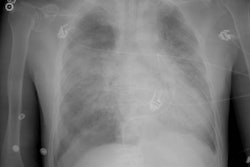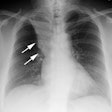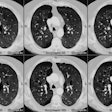Acute respiratory distress syndrome: CT abnormalities at long-term follow-up.
Desai SR, Wells AU, Rubens MB, Evans TW, Hansell DM
PURPOSE: To document abnormalities at computed tomography (CT) in adult survivors of acute respiratory distress syndrome (ARDS), to determine the relationships between CT patients during the acute phase and at follow-up, and to assess the effects of mechanical ventilation on the development of CT abnormalities. MATERIALS AND METHODS: Thin-section CT scans were obtained during the acute illness and at follow-up in 27 patients with ARDS. The extent and distribution of individual CT patterns were independently analyzed. RESULTS: At follow-up CT, a reticular pattern was the most prevalent (23 patients [85%]) and extensive CT abnormality, with a striking anterior distribution (more anterior distribution than posterior distribution, P < .001). A reticular pattern at follow-up was inversely correlated with the extent of intense parenchymal opacification on scans obtained during the acute illness (Spearman r = -0.26; P < .001). The extent of a reticular pattern at follow-up CT was independently related to the total duration of mechanical ventilation (P = .02) but was most strongly related to the duration of pressure-controlled inverse-ratio ventilation (P < .001). CONCLUSION: A reticular pattern, with a striking anterior distribution, is a frequent finding of follow-up CT in ARDS survivors and is most strongly related to the duration of pressure-controlled inverse-ratio ventilation.
